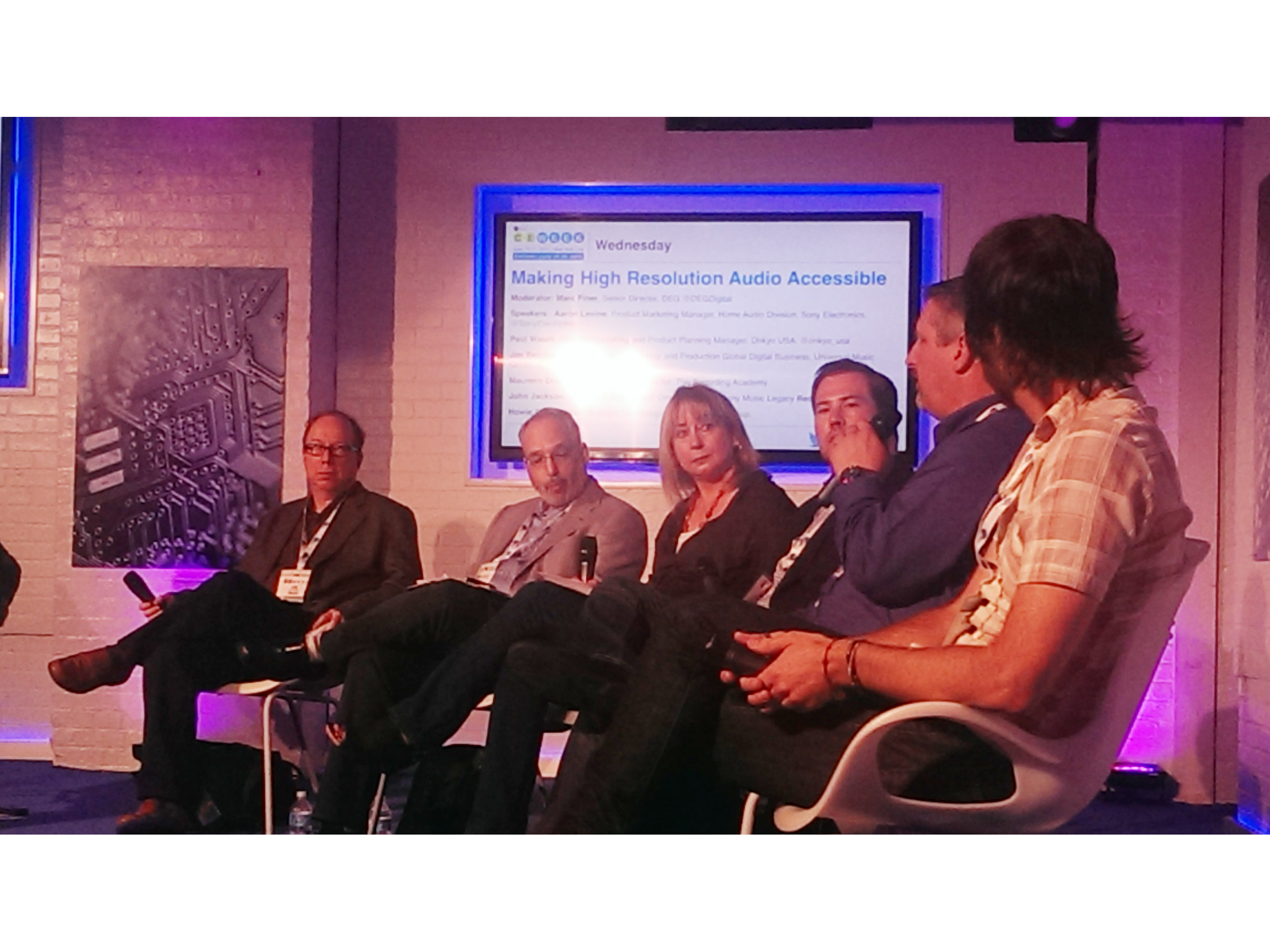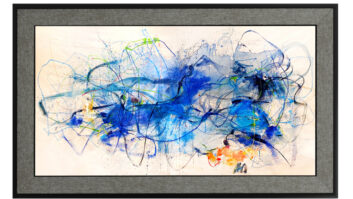
New York – Audiophiles and audiophile-targeted music-download sites are driving demand for high-resolution music files, but sales will broaden if high-resolution DACs appear in more mobile devices such as smartphones, music-industry executives said during a seminar, here, this week.
They also said the selection of high-resolution music is growing, that mainstream download sites have taken notice of high-resolution audio’s growth, and that the growth of high-end headphones for mobile use will encourage high-res music listening on mobile devices because they let consumers hear the difference.
“Our retailers today are focused on the audiophile market,” said Howie Singer, senior VP at Warner Music Group during the CE Week panel. But average consumers listen to music on their mobile devices, he added.
Jim Belcher, technology and production VP at Universal Music Group, agreed that “PCs are fading as consumption devices” among consumers, and he expects high-resolution audio chips in smartphones “will encourage a lot of people” to listen to high-res music. Major music-download sites will be more interested in selling high-resolution music downloads as soon as high-resolution chipsets are available in “the large majority of phones,” he said.
Big retailers have not “formally” indicated an interest in selling UMG’s high-resolution music, Belcher noted, but “it’s on their radar.”
To expand the market “to music lovers beyond the audiophile,” hi-res files must be as easy to access as lossy compressed files, Singer added. Large high-res files over today’s networks mean slower delivery, he pointed out.
Although high-resolution music downloads are in their infancy, Belcher said UMW is “encouraged” by sales so far. A few years ago, he said, there were no high-resolution retailers at all, and UMG licensed its first retailer only a couple years ago. “That dealer exceeded our expectations,” he said, and UMG since then has expanded its roster of licensee retailers to three.
Warner’s Singer is also encouraged by sales so far. Warner offers only a limited catalog through several retailers, and they are delivering “good performance relative to the catalog size,” Singer said. He expects high-res revenues per store to rise and for more stores to enter the market.
The music companies acknowledge, however, that it has been a challenge to deliver high-res files to stores, but the challenges are fading.
One bottleneck has been older mixing hardware and software, but recording engineers have been upgrading their equipment to more easily create digital high-resolution masters, said Maureen Droney, senior executive director of the Recording Academy’s producers and engineers wing.
Ironically, Apple is encouraging the creation of high-resolution digital masters with its Mastered for iTunes program, under which it sells songs with sound quality higher than that of its regular offerings. Music companies “need a high-resolution file to participate,” although Apple doesn’t sell the songs in a high-resolution format, Singer noted.
Hundreds of albums have been delivered to Apple for its Mastered for iTunes program, Belcher noted.
To offer more high-res music, music companies are converting archival analog masters into high-resolution digital masters, working with CD-era digital masters, and working with DSD masters created originally for physical high-resolution SACD discs.
Sony Music started early on to create high-resolution masters, said John Jackson, A&R and content development VP for Sony’s Legacy Music Group. Sony began making DSD masters for its physical SACD discs in the late 1990s, and it started a preservation project several years ago to archive music from the 40s, 50s and 60s to high-resolution digital masters that can now be used to create high-res files for consumers.













